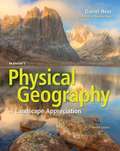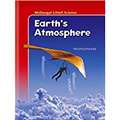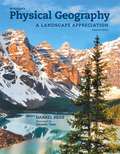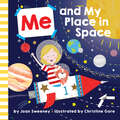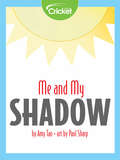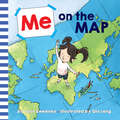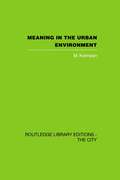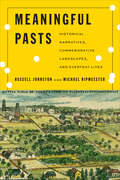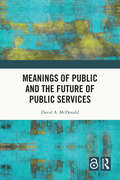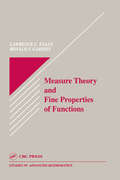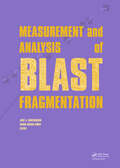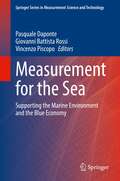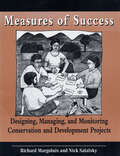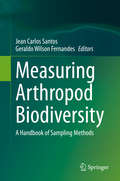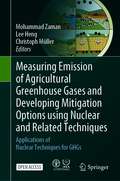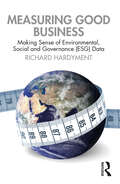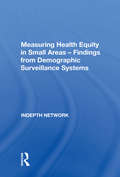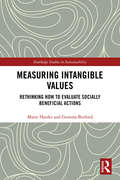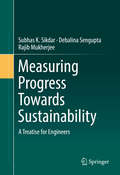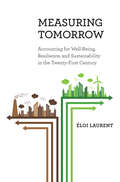- Table View
- List View
McDougal Littell World Geography
by Marci Smith Deal Daniel D. Arreola James F. Petersen Rickie SandersThe earth is a unique planet capable of supporting a wide variety of life forms. Human beings adapt and alter the environments on earth.
McGraw-Hill Science Unit C: Earth and Its Resources
by Richard H. Moyer Joanne Vasquez Jay Hackett Pamela Stryker H. Prentice Baptiste Lucy H. DanielThis Unit C textbook contains lessons on Rocks and Minerals; and Air, Water, and Energy.
McKnight's Physical Geography: A Landscape Appreciation, 12th Edition
by Dennis G. Tasa Darrel HessExplore the changing global environment with real-world examples and mobile field trips Continuing Tom L. McKnight's well-known thematic focus on landscape appreciation, Darrel Hess offers a broad survey of all of the physical processes and spatial patterns that create Earth’s physical landscape. McKnight’s Physical Geography: A Landscape Appreciation provides a clear writing style, superior art program, and abundant pedagogy to appeal to a wide variety of readers. <P><P>The 12th Edition offers a truly meaningful integration of visualization, technology, and the latest applied science, providing essential opportunities to teach and engage readers in these processes and patterns. Topics that are tied to readers’ real-world concerns such as global environmental change, along with new videos, photography, online lab resources, and updated interactive tools, make it the most effective learning program for physical geography.
Mcdougal Littell Science: Earth's Atmosphere
by Mcdougal LittellScientists are curious. Since ancient times, they have been asking and answering questions about the world around them. Scientists are also very suspicious of the answers they get. They carefully collect evidence and test their answers many times before accepting an idea as correct.
Mcknight's Physical Geography: A Landscape Appreciation 11th Ed
by Dennis G. Tasa Darrel HessContinuing Tom L. McKnight's well-known thematic focus on landscape appreciation, Darrel Hess offers a broad survey of all of the physical processes and spatial patterns that create Earth's physical landscape. McKnight's Physical Geography: A Landscape Appreciation provides a clear writing style, superior art program, and abundant pedagogy to appeal to a wide variety of students. This new edition offers a truly meaningful integration of visualization, technology, the latest applied science, and new pedagogy, providing essential tools and opportunities to teach and engage students in these processes and patterns.
Me and My Place in Space (Me. . Books! Ser.)
by Joan SweeneyWhere am I in the solar system? A beloved bestseller, now refreshed with new art from Christine Gore, that will help children discover their place in the Milky Way. Where is the earth? Where is the sun? Where are the stars? Now with new art by Christine Gore, here is an out-of-this world introduction to the universe for children. With Earth as a starting point, a young astronaut leads readers on a tour past each planet and on to the stars, answering simple questions about our solar system. In clear language, drawings, and diagrams, space unfolds before a child's eyes. Colorful illustrations, filled with fun detail, give children a lot to look for on every page, and a glossary helps reinforce new words and concepts. A terrific teaching tool, Me and My Place in Space is an easy and enjoyable way to introduce the concept of space to budding astronomers.
Me and My Shadow
by Amy TaoTake a look at your shadow in the sunshine. Try a shadow puppet. Learn how the sun's position in the sky affects your shadow.
Me on the Map (Me. . Books! Ser.)
by Joan SweeneyMaps can show you where you are anywhere in the world! A beloved bestseller that helps children discover their place on the planet, now refreshed with new art from Qin Leng. Where are you? Where is your room? Where is your home? Where is your town? This playful introduction to maps shows children how easy it is to find where they live and how they fit in to the larger world. Filled with fun and adorable new illustrations by Qin Leng, this repackage of Me on the Map will show readers how easy it is to find the places they know and love with help from a map.
Meaningful Pasts: Historical Narratives, Commemorative Landscapes, and Everyday Lives
by Russell Johnston Michael RipmeesterIn Meaningful Pasts, Russell Johnston and Michael Ripmeester explore two strands of identity-making among residents of the Niagara region in Ontario, Canada. First, they describe the region’s official narratives, most of which celebrate the achievements of white settlers with a mix of storytelling, rituals, and monuments. Despite their presence in local lore and landmarks, these official narratives did not resonate with the nearly one thousand residents who participated in five surveys conducted over eleven years. Instead, participants drew on contemporary people, places, and events. Second, the authors explore the emergence of Niagara’s wine industry as a heritage narrative. The book shares how the survey participants embraced the industry as a local identifier and indicates how the industry’s efforts have rekindled the residents’ interest in agriculture as a significant element of regional heritage and local identities. Revealing how the profiles of local narratives and commemorations become entwined with social, cultural, economic, and political power, Meaningful Pasts illuminates the fact that local narratives retain their relevance only if residents find them meaningful in their day-to-day lives.
Meanings of Public and the Future of Public Services
by David A. McDonaldCritically assessing meanings of the term ‘public’, this book situates the emergence and expansion of ‘public services’ within market-based forms of production and consumption. It highlights the potential for making public services more progressive within market societies, but underscores their ongoing capture by private interests and emphasises the inherent limits of reform within a ‘bourgeois public sphere’. The author explores opportunities for more expansive forms of non-marketized public services, examining emerging debates on the theory and practice of equitable, participatory and sustainable forms of publicness that go beyond mere ownership. The book then asks how we can build a robust international ‘pro-public’ movement that juggles universal needs with local context. With a focus on essential public services such as water, electricity and health, the text is global in its scope and written for a broad audience. It will be useful for those interested in social and public policy, public services and public administration, political theory, economic geography, social movements, sustainability and development.
Measure Theory and Fine Properties of Functions (Studies In Advanced Mathematics Ser. #5)
by LawrenceCraig EvansThis book provides a detailed examination of the central assertions of measure theory in n-dimensional Euclidean space and emphasizes the roles of Hausdorff measure and the capacity in characterizing the fine properties of sets and functions. Topics covered include a quick review of abstract measure theory, theorems and differentiation in Mn, lower Hausdorff measures, area and coarea formulas for Lipschitz mappings and related change-of-variable formulas, and Sobolev functions and functions of bounded variation. The text provides complete proofs of many key results omitted from other books, including Besicovitch's Covering Theorem, Rademacher's Theorem (on the differentiability a.e. of Lipschitz functions), the Area and Coarea Formulas, the precise structure of Sobolev and BV functions, the precise structure of sets of finite perimeter, and Alexandro's Theorem (on the twice differentiability a.e. of convex functions).Topics are carefully selected and the proofs succinct, but complete, which makes this book ideal reading for applied mathematicians and graduate students in applied mathematics.
Measurement and Analysis of Blast Fragmentation
by José A. Sanchidrián Ashok Kumar SinghFragmentation characteristics influence mucking productivity, crusher throughput and energy consumption, plant efficiency, yield and recovery, or the price itself of the end product in the case of industrial minerals and aggregates. Reliable, quantitative measurements of fragment sizes are instrumental in controlling and optimizing the blasting res
Measurement for the Sea: Supporting the Marine Environment and the Blue Economy (Springer Series in Measurement Science and Technology)
by Giovanni Battista Rossi Pasquale Daponte Vincenzo PiscopoIn the history of humankind, the sea has always played a key role as a privileged medium for communication, commerce and contact among population centers. It constitutes an essential ecosystem, and an invaluable reservoir and source of food for all living beings. Therefore, its heath is a critical challenge for the survival of all humanity, particularly as one the most important environmental components targeted by global warming. Measuring and monitoring techniques are key tools for managing the marine environment and for supporting the Blue Economy. With this perspective, a series of annual international events, entitled Metrology for the Sea (MetroSea for short) was begun in 2017. Their increasing success inspired this book, which provides an anthology of tutorials dealing with a representative selection of topics of concern to a broad readership. The book covers two broad application areas, marine hydrography and meteorology, and then deals with instrumentation for measurement at sea. Typical metrological issues such as calibration and traceability, are considered, for both physical and chemical quantities. Key techniques, such as underwater acoustic investigation, remote sensing, measurement of waves and monitoring networks, are treated alongside marine geology and the monitoring of animal species. Economic and legal aspects of metrology for navigation are also discussed. Such an unparalleled wide vision of measurement for the sea will be of interest to a broad audience of scientists, engineers, economists, and their students.
Measurement of Blast Fragmentation
by John A. Franklin Takis KatsabanisA collection of workshop papers providing state-of-the-art reviews on all aspects of fragmentation, including photographic requirements, image enhancement, statistical treatment, and applications in quarrying, mining and minerals processing industries.
Measurement of Higgs Boson Production Cross Sections in the Diphoton Channel: with the full ATLAS Run-2 Data and Constraints on Anomalous Higgs Boson Interactions (Springer Theses)
by Ahmed Tarek Abouelfadl MohamedThis thesis presents the measurement of the Higgs boson cross section in the diphoton decay channel. The measurement relies on proton-proton collision data at a center-of-mass energy √s = 13 TeV recorded by the ATLAS experiment at the Large Hadron Collider (LHC). The collected data correspond to the full Run-2 dataset with an integrated luminosity of 139 fb-1. The measured cross sections are used to constrain anomalous Higgs boson interactions in the Effective Field Theory (EFT) framework. The results presented in this thesis represent a reduction by a factor 2 of the different photon and jet energy scale and resolution systematic uncertainties with respect to the previous ATLAS publication. The thesis details the calibration of electron and photon energies in ATLAS, in particular the measurement of the presampler energy scale and the estimation of its systematic uncertainty. This calibration was used to perform a measurement of the Higgs boson mass in the H → γγ and H → 4l channels using the 36 fb−1 dataset.
Measurements of Higgs Boson Properties in Proton-Proton Collisions at √s =7, 8 and 13 TeV at the CERN Large Hadron Collider (Springer Theses)
by Ulascan SaricaThis thesis documents the measurement of lifetime, width, mass, and couplings to two electroweak bosons of the recently-discovered Higgs boson using data from the CMS experiment at the Large Hadron Collider. Both on-shell (at the mass of around 125 GeV) and off-shell (above 200 GeV) Higgs boson production is studied and an excess of off-shell production with significance above two standard deviations is observed for the first time. The latter is a qualitative new way to study the Higgs field, responsible for generation of mass of all the known elementary particles. In addition, phenomenological tools have been developed with the Monte Carlo event generator and matrix element techniques for an optional analysis of LHC data. Optimization of the CMS data with careful alignment of the silicon tracker is also presented.
Measures of Success: Designing, Managing, and Monitoring Conservation and Development Projects
by Nick Salafsky Anna Balla Richard A. MargoluisMeasures of Success is a practical, hands-on guide to designing, managing, and measuring the impacts of community-oriented conservation and development projects. It presents a simple, clear, logical, and yet comprehensive approach to developing and implementing effective programs, and can help conservation and development practitioners use principles of adaptive management to test assumptions about their projects and learn from the results.The book presents a systematic approach to improving the focus, effectiveness, and efficiency of projects, with specific guidelines and advice on:designing a realistic conceptual framework based on local site conditions developing clearly defined goals, objectives, and activities creating a monitoring plan that can be used to assess whether goals and objectives are being met integrating social and biological science techniques to collect the most relevant and useful data in the most cost-effective way using the information obtained through the monitoring plan to modify the project and learn from the resultThe text is developed in eight chapters that follow the structure of a planning process from conception to completion, with the chapters linked by four scenarios that serve as teaching case studies throughout the book. Examples from these scenarios illustrate the processes and tools discussed, and each scenario case study is presented in its entirety in an appendix to the volume. The approach has been developed and field tested by practitioners working in many different projects in Latin America, Africa, and Asia, and their experience and input ensure that the guide is both practical and useful.Measures of Success is the only work of its kind currently available, and represents an invaluable resource for field-based practitioners, project managers, and local community leaders, as well as for international NGO staff, college and university teachers and students, researchers, and government officials.
Measuring Arthropod Biodiversity: A Handbook of Sampling Methods
by Geraldo Wilson Fernandes Jean Carlos SantosThis book brings together a wide range of sampling methods for investigating different arthropod groups. Each chapter is organised to describe and evaluate the main sampling methods (field methods, materials and supplies, sampling protocols, effort needed, and limitations); in addition, some chapters describe the specimen preparation and conservation, species identification, data collection and management (treatment, statistical analysis, interpretation), and ecological/conservation implications of arthropod communities. The book aims to be a reference for zoologists, entomologists, arachnologists, ecologists, students, researchers, and for those interested in arthropod science and biodiversity. We hope the book will contribute to advance knowledge on field assessments and conservation strategies. Arthropods represent the most speciose group of organisms on Earth, with a remarkable number of species and interactions still to be described. These invertebrates are recognized for playing key ecological roles in terrestrial, freshwater and marine ecosystems. Because of the increasing and relentless threats arthropods are facing lately due to a multitude of human induced drivers, this book represents an important contribution to assess their biodiversity and role in ecosystem functioning and generation of ecosystem services worldwide.
Measuring Emission of Agricultural Greenhouse Gases and Developing Mitigation Options using Nuclear and Related Techniques: Applications of Nuclear Techniques for GHGs
by Christoph Müller Lee Heng Mohammad ZamanThis open access book is an outcome of the collaboration between the Soil and Water Management & Crop Nutrition Section, Joint FAO/IAEA Division of Nuclear Techniques in Food and Agriculture, Department of Nuclear Sciences and Applications, International Atomic Energy Agency (IAEA), Vienna, Austria, and the German Science Foundation research unit DASIM (Denitrification in Agricultural Soils: Integrated control and Modelling at various scales) and other institutes. It presents protocols, methodologies and standard operating procedures (SOPs) for measuring GHGs from different agroecosystems and animals using isotopic and related techniques that can also be used to validate climate-smart agricultural practices to mitigate GHGs. The material featured is useful for beginners in the field wanting an overview of the current methodologies, but also for experts who need hands-on descriptions of said methodologies. The book is written in form of a monograph and consists of eight chapters.
Measuring Good Business: Making Sense of Environmental, Social and Governance (ESG) Data
by Richard HardymentWhat's a good company? Environmental, Social and Governance (ESG) investing is transforming the world of business and finance. Investors are using data on issues like climate and diversity to enhance returns and make an impact. But with scepticism creeping in, how far can we trust the numbers? Is all this data making a difference to people and planet, and have we actually lost sight of what we are measuring and why? Measuring Good Business explains what we can measure – and calls for honesty about what we can't.This is the first book to look at the numbers behind the ESG revolution. It sets out a bold blueprint to revolutionise the data based on bottom-up, inclusive metrics, customised data to meet investor needs and impact measures that put sustainability in context. It is essential reading for anyone creating, using or studying ESG and sustainability data. After unpacking what’s going on today, the book focuses on solutions, providing a how-to guide to improve measurement and make sustainable business more impactful. It shows why measurement matters in a highly accessible way through stories and insights based on practical experience.The book is relevant to a broad readership of data creators (e.g. those working in companies), users (e.g. capital market participants) as well as the large ecosystem of raters, rankers and standard setters across the private, public and non-profit worlds.
Measuring Health Equity in Small Areas: Findings from Demographic Surveillance Systems
by INDEPTH NetworkOver the past decade, several initiatives have been launched to address the major health problems affecting the world's poorest countries, including global efforts to combat HIV/AIDS, TB and malaria. More recently, a millennial challenge has been laid down to root out and confront the links between poverty and health. Using demographic surveillance systems, the INDEPTH researchers aim to contribute both to the empirical knowledge about health equity in developing countries and to report on the application of and innovation in tools and methods. Illustrated with case studies from Africa and Asia, this book puts forward a comprehensive view of the INDEPTH methodologies and findings. It develops and measures concepts and constructs of 'poverty' and 'equity' and relates these to health status. While tools and concepts for measuring health status are more developed, this volume contributes by grappling with new concepts and tools to measure changes in deprivation and disadvantage, adding to this intense theoretical and methodological debate.
Measuring Intangible Values: Rethinking How to Evaluate Socially Beneficial Actions (Routledge Studies in Sustainability)
by Marie Harder Gemma BurfordThis book explores the complex problem of how to measure the ‘success’ of social organisations, projects and activities. Whether improving a local situation, organizing a campaign around sustainability, or assessing the intangible effects of perceived social benefits, currently we have only have a very limited range of mechanisms for judging effectiveness. On the one hand, a market-driven logic demands that qualitative perceptions and experiences are quantified into simplified and numerically defined variables. On the other, community projects are left un-assessed, as one-off outcomes of local and situated processes that must somehow automatically ‘make things better’. For academics, researchers and other professionals working in this field this has resulted in the deep frustration of not being able to assess the things that are most centrally important: higher human values such as integrity, trust, respect, equality and social justice. Measuring Intangible Values argues that we can make shared social values – and their measurement - central to decisions about improving civil society. But because these social values are intangible, we need to develop ways of eliciting and validating them at the local level that can capture people’s shared meanings across multiple goals and perspectives. We need to develop mechanisms for evaluating whether these values are met that use rigorous but also relevant measures. And we need to develop ways of doing this that are scalable, transferable and comparable across different kinds of organisations and fields of activity. This book will be valuable for researchers in all social science disciplines which touch on human values, such as sociology, social psychology, human geography, social policy, architecture and planning, design and community studies.
Measuring Progress Towards Sustainability
by Subhas K. Sikdar Debalina Sengupta Rajib MukherjeeThis book is a state of the art treatise on what has been done so far on measuring sustainability for decision making. Contributions will appeal to engineers and scientists engaged in technology development, assessment, and verification. Researchers working on engineering sustainability are likely to get ideas for further research in quantifying sustainability for industrial systems. Concepts described can be applied across all scales, from process technology to global sustainability; and challenges and limitations are also addressed. Readers will discover important insights about simulation-based approaches to process design and quantitative measurement techniques of sustainability for business and technology systems. Most of the examples and case studies are from chemical enterprises but the methodologies presented could be applicable to any system for which quantitative data for indicators are available, and the choice of the set of indicators of sustainability are comprehensive.
Measuring Tomorrow: Accounting for Well-Being, Resilience, and Sustainability in the Twenty-First Century
by Éloi LaurentHow moving beyond GDP will improve well-being and sustainabilityNever before in human history have we produced so much data, and this empirical revolution has shaped economic research and policy profoundly. But are we measuring, and thus managing, the right things—those that will help us solve the real social, economic, political, and environmental challenges of the twenty-first century? In Measuring Tomorrow, Éloi Laurent argues that we need to move away from narrowly useful metrics such as gross domestic product and instead use broader ones that aim at well-being, resilience, and sustainability. By doing so, countries will be able to shift their focus away from infinite and unrealistic growth and toward social justice and quality of life for their citizens.The time has come for these broader metrics to become more than just descriptive, Laurent argues; applied carefully by private and public decision makers, they can foster genuine progress. He begins by taking stock of the booming field of well-being and sustainability indicators, and explains the insights that the best of these can offer. He then shows how these indicators can be used to develop new policies, from the local to the global.An essential resource for scholars, students, and policymakers, Measuring Tomorrow covers all aspects of well-being—including health, education, and the environment—and incorporates a broad range of data and fascinating case studies from around the world: not just the United States and Europe but also China, Africa, the Middle East, and India.

